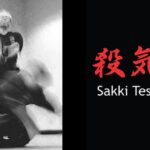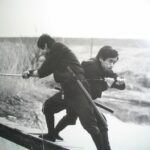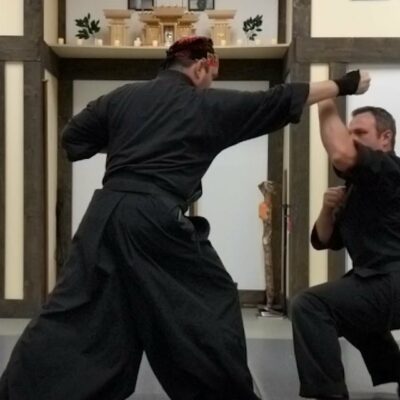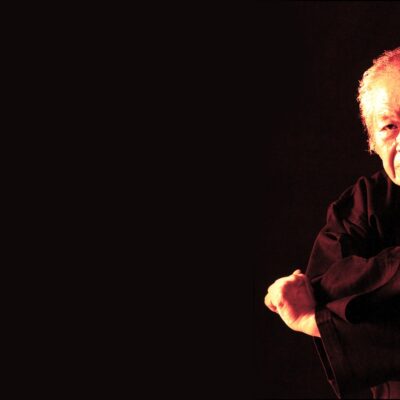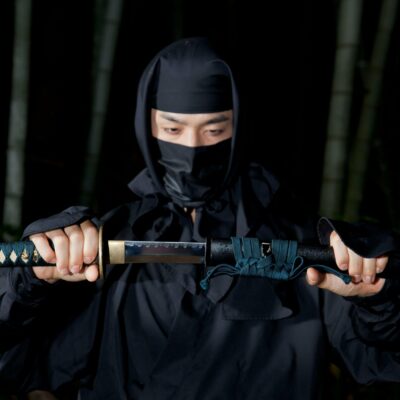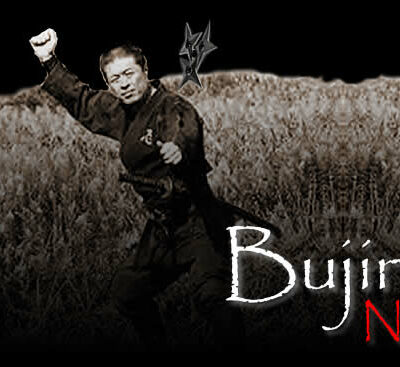A student in class recently asked why I don’t say the entire Tadashi Kokoro no Kaisetsu. The answer was simple: I didn’t know it by heart. I also explained that I would be uncomfortable saying the phrase without knowing what it means. So I decided to find out what the entire poem meant, and to start saying it at the beginning of class once I understood what it meant. Here, I break down what I found and how I chose to interpret it.
This is a Buddhist mantra or poem, often said at the beginning of class. The last line of the poem is the phrase Shiken Haramitsu Daikomyo, which is repeated by students. Although the teacher might not be saying this poem audibly, it is implied that they are saying it in their head.
Original: 千早振る神の教えは久遠に正き心身を守るらん
Romanji: Chihayafuru kami no oshie wa tokoshie ni tadashiki kokoro mi wo mamoruran
Lit. Translation: “Thousand Vibration God’s teaching forever to righteous heart body will gaurd”
First we should note that this phrase ends with the subject marking particle “wa”. This indicates that the subject of the sentence is the “Thousand Vibrations God’s Teachings”. A good way to translate the particle “wa” is to insert the phrase “as for…”. So we can translate the phrase as “As for the thousand vibrations God’s teachings, …”. But what is a thousand vibrations supposed to mean? There are a couple ways we can think about this:
- Resonance; like a sound vibration. We can reinterpret this as the resonance of God’s teachings – the vibration felt by the lesson.
- Purity: while researching someone cited that this directly references a purification ritual in Buddhism. Hence, it may be referencing purity in general, or the very act of saying the poem/mantra.
Either way, there is connection to an overall essence to the teachings – a universal lesson.
The particle “ni” indicates direction, equivalent in english as “at” or “to”. “Tokoshie” simply means “forever”. So the phrase “tokoshie ni” would be translated into natural english as “to/for eternity”. 正き心 …tadashi kokoro… This is simply “righteous heart”. It could be also interpreted as “correct” or “positive”. 身を守るらん …mi wo mamoruran. “Mi” is body, while “wo” (pronounced “o”) is a direct object marking particle. This means the “body” will be receiving the action. “Mamoru” is a verb that means either “observe” or “defend”. So this last phrase means “body defended” or in natural english “body will be defended”.
So the entire phrase can roughly be translated as “the essence of divine teaching, to eternity, a righteous heart, body will be defended”. There are a number of ways we can interpret this:
- The essence of divine teaching will forever protect the body of a righteous heart
- The essence of divine teaching is that a righteous heart will protect the body.
I particularly like the second interpretation, even though it is most likely the first. The second puts more emphasis and responsibility on have a righteous heart, which resonates with me personally.
Either way, the poem is emphasizing that having a good heart is key. Without a good heart, no matter how closely you follow “divine teachings”, you won’t be protected.
To put it in context of martial arts, a good heart is the best/most important means of self defense. The overall feeling of this poem ties in closely to the closing phrase that is repeated by students during “Reiho” (bow-in): shiken haramitsu daikomyo.
As I wrote in our previous article on Shiken Haramitsu Daikokmyo, I interpret it to mean “listen to your heart, clear your mind, and you will find the answer you seek (i.e. enlightenment).” Some might argue that this isn’t a perfect translation, but I think it represents the overall concept of the phrase.
We now see how these two phrases tie so closely together: The first is a statement on the importance of a good heart, and the second instructs to listen to one’s heart for answers. It makes sense that we would say this mantra before class; a good heart is essential since what we do could be used for great violence.
I’m also reminded of what Soke said about the 3 key attributes of a good martial artist: sainou (ability), kokoro (heart), utsuwa (capacity). Of these three, Soke said kokoro (heart) is the most important.
Considering heart is the focus of the opening and closing mantra, we see why he would make this statement. So next time you bow-in, remember, the key to your training is developing and maintain a “righteous heart”.

